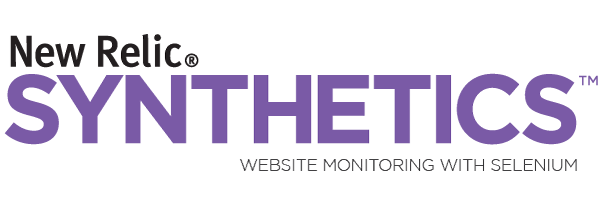Selenium Hangout 2 Recap
This is a recap from the most recent Selenium Hangout (a.k.a. The World’s Best Selenium Meetup). For info on future meetups, follow them on Twitter.
Thanks to all who attended and tuned into the last Selenium Hangout where we talked about Selenium 3! Below is a write-up of the meetup, the video, and relevant links we mentioned. And to access all meetup videos you can go here.
Panel
David Burns (@AutomatedTester)
Dave Haeffner (@TourDeDave)
Kevin Menard (@nirvdrum)
Simon Stewart (@shs96c)
Video
Minutes
00:00 – 05:04
Goal and items for today’s conversation
Feedback review from last meetup
Intros
05:05 – 07:34
API changes
Packaging
Gradual approach to phasing out Selenium RC
Support for Selenium IDE HTML Suite running
07:35 – 09:55
Selenium Builder, how it will replace Selenium IDE, and when
09:56 – 11:30
Firefox Driver 2 release (a.k.a. “M day”)
11:31 – 12:00
Tasks required to complete WebDriver W3C standard
12:01 – 14:30
Upgrade concerns for enterprise users of Selenium
Recommended watching: Jason Leyba’s talk at SeConf about upgrading Selenium at Google
Reasons why companies should make the jump
14:31 – 14:55
Why we need browser vendors to help
Why the W3C standard makes sense
14:56 – 21:40
Lessons learned and challenges found when a large scale practitioner upgraded from RC to WebDriver
Things they would like to see cleaned in Selenium 3
A nod in support of Selenium RC as a separate download
Simon attempts a joke
21:41 – 25:15
Other changes in Selenium 3
– all or nothing upgrade
– exception handling (changing from status codes to status strings)
– how commands are getting sent across the wire
– philosophy behind approach to Selenium RC approach
25:16 – 27:29
Mobile support in Selenium 3
27:30 – 37:05
Firefox Driver and Firefox OS
Recommended watching: Jonathan Griffin & David Burns’ talk at SeConf on Firefox Driver/Marionette
Creating a common set of Desired Capabilities
Recommended watching: David Burns’ talk at SeConf on adding mobile gestures to WebDriver
37:06 – 38:20
Documentation
38:21 – 49:40
Brief history of Selenium project
Recommendation for RC users to look at the stable and brilliant new and shiny
Plan for Selenium RC in depth and rough timeline
Another recommendation to watch Jason Leyba’s talk at SeConf about upgrading Selenium at Google
49:41 – 50:45
Encouragement for folks to hop on Selenium IRC chat channel (especially if your question wasn’t asked/answered)
Recommended reading: Elemental Selenium’s write-up on what IRC is, how to use it, and how to connect to the Selenium IRC chat channel
50:46 – 51:45
Where to submit feedback and request topics for future meetups
Mobile WebDriver
Although the WebDriver APIs started life as just a mechanism for automating web browsers, over the past few years it has been extended to also work on mobile devices. Projects such as Appium, iosdriver, and Selendroid have all shown that this approach works, and works well. On the Web, if you start using Selenium WebDriver with one browser (Firefox, for example), it’s easy to switch out the browser for another one (such as Internet Explorer or Chrome). It’d be nice to have a similar option for mobile, switching from one automation framework for Android to another.
As part of the Selenium 3 work, we have started working on a test suite to help ensure this level of interop between appium and iosdriver, and appium and selendroid. To kick start the process, the primary authors of each of those tools, as well as others including David Burns representing the Marionette project (Mozilla’s implementation of WebDriver for Firefox and Firefox OS) and Simon Stewart, the lead of the Selenium project, have spent the past two days locked in a small room in Mozilla HQ, London. They’ve taken this time to work out the areas where each of their projects didn’t align and agreed on a way to ensure a level of interoperability. There was only a minimal quantity of blood and tears, but plenty of hard work.
The agenda for the past two days can be found here, and the minutes are also available.
As we speak, work has started on a shared test suite, hosted in a repo in the selenium project’s Google Code page. Please, feel free to come along and join in!
The Road to Selenium 3
Selenium 2 was released in July 2011. It’s now two years old, and what a couple of years it’s been! The WebDriver APIs, which were the major addition in Selenium 2, are now the basis for a W3C standard, and there are implementations written and supported by Google, Mozilla and Opera. There have been 34 releases, with official support for Java, C#, Python, Ruby and Javascript, and the community has stepped in to provide bindings for Perl, PHP and others. There have been 57 different people authoring changes in the code base, and countless more participating in the online forums, offering help and advice.
While all this has been happening, the world has moved on, and now it’s time for the Selenium project to look to the future. It’s with great pleasure that I can now say that we’re working towards Selenium 3.
We aim for Selenium 3 to be “a tool for user-focused automation of mobile and web apps”.
What does this mean? For mobile users, the Selenium project will be hosting a suite of tests to facilitate interoperability between the many different projects available that are extending the WebDriver API to also cope with mobile. Developers from projects such as Appium, ios-driver and selendroid will be working on the suite of tests to enable this.
We’ll also be working on making the technology behind Selenium as stable and capable as possible. For this reason, Selenium 3 will see the removal of the original Selenium Core implementations, and consequently we’ll be deprecating the RC APIs too. The old versions will still be available as a separate download, but active development will cease, except for very urgent fixes. We will still be providing an implementation of the RC APIs backed by WebDriver, so you can continue running your existing tests, but now would be a great time to make the move to using the WebDriver APIs directly.
For those of you exporting your tests from IDE and running the HTML suites, we’ll provide an alternative runner that allows you to continue running those tests too, though it’ll be backed by the same “WebDriver-backed” RC implementation as offered by the main download. Again, the original implementation will be available as a download, but it will no longer be actively developed once we release 3.0.
Our current plan is to start shipping 3.0 by Christmas this year: it’s going to be a lot of fun!











